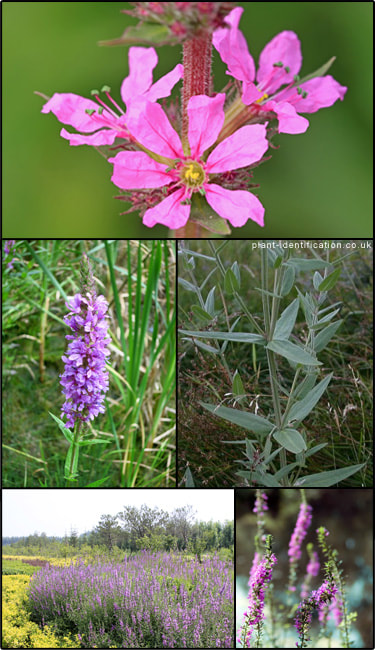|
Purple loosestrife (Lythrum salicaria)
What problems does purple loosestrife cause? Like most invasive plants on the Top 12 list for the Grand Traverse region, purple loosestrife forms monocultures that replace native plants in high quality natural areas, which in turn reduces critical food resources for birds, butterflies, and other wild creatures. Not only do purple loosestrife seeds germinate very rapidly, purple loosestrife grows faster than almost any wetland plant. This makes it very easy for it to out-compete native species. When purple loosestrife enters an area its stiff stems can collect debris such as silt (sedimentation). This can dry up a shallow water habitat and make it into a terrestrial area, destroying the habitat for native aquatic animals that have been living there. Furthermore, the stems of purple loosestrife are very unwelcoming to waterfowl and as a result waterfowl do not frequent areas with purple loosestrife. What does purple loosestrife look like? Purple can grow to 4-10 feet tall. The leaves of purple loosestrife start out with lance-shaped leaves, but can become very variable in shape as the plant grows. It has a woody root that can have from 30-50 stems coming from it. Purple loosestrife has a square, woody stem and opposite leaves. Purple loosestrife is in bloom July through October and the flowers are a vivid purple that are very easy to spot from a distance. How do I manage purple loosestrife? Once it is established, purple loosestrife is very hard to control and likely won’t completely disappear in a large patch. The best thing to do is monitor natural areas and work to remove purple loosestrife as soon as it is spotted. Mechanical removal is not recommended, but if done on a small patch and done very carefully (making sure that all parts of the plant are removed) it can work. Two species of Galerucella beetles can provide effective biocontrol for purple loosestrife, but will die off when the population of purple loosestrife goes down, allowing it to grow back again. |
| habitatmatters.org |
Contact US231-252-4148
3334 Veterans Drive Unit A Traverse City, Michigan 49685 |
Pleasant Peninsula Design, Habitat Matters 2017

